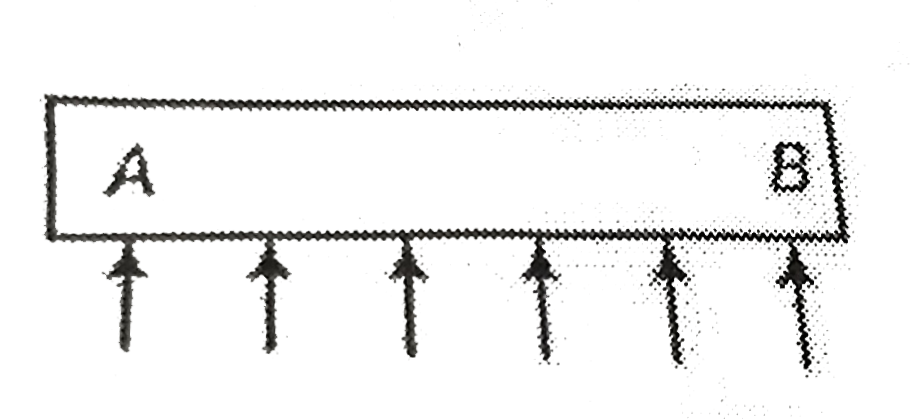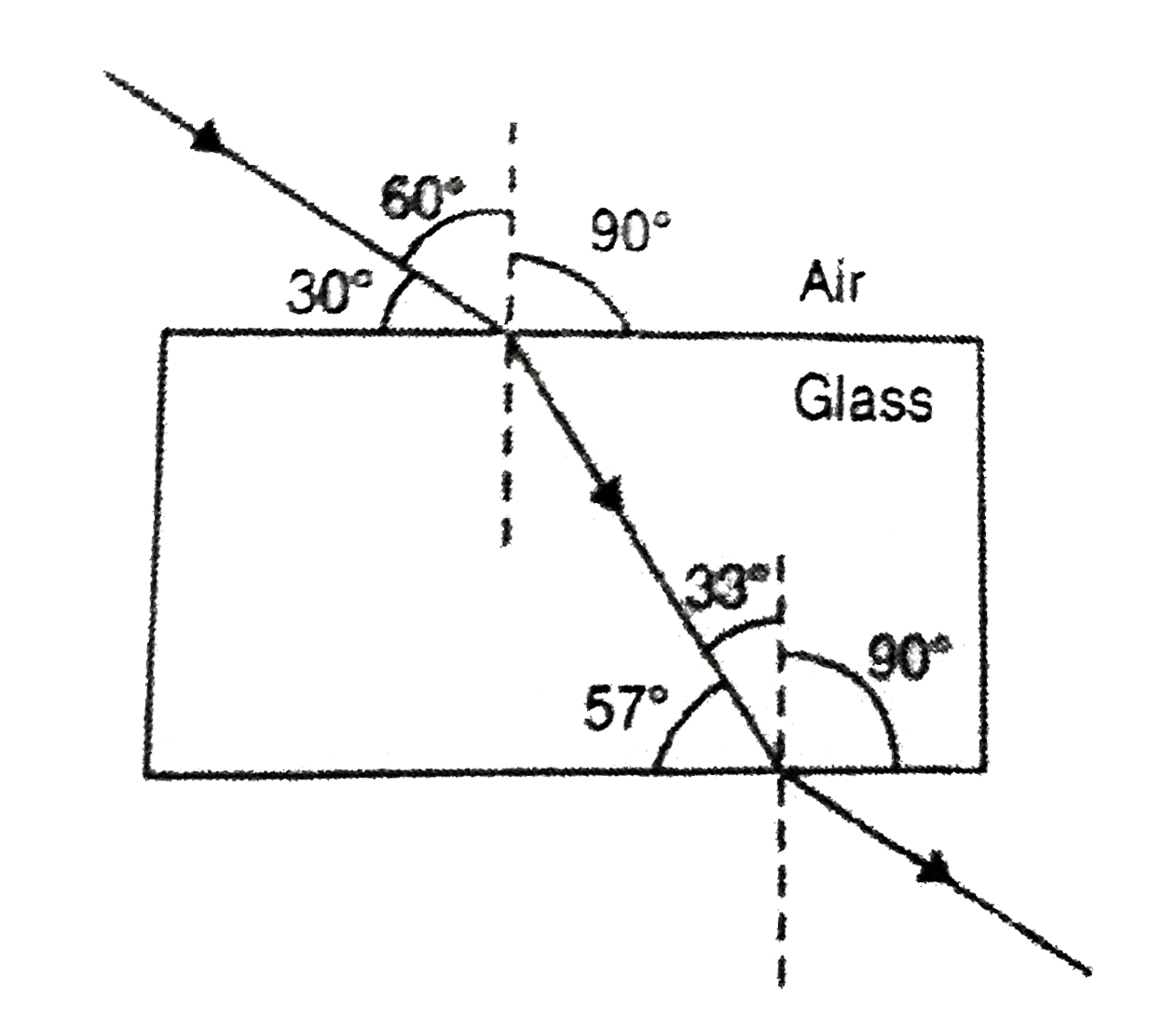Rays of light fall perpendicularly on a glass slab (n>1) as shown in figure. If n at A is maximum and n at B is minimum, then the rays will

tilt towards A
tilt towards B
not deviate
undergo total internal reflection
The correct Answer is:C
टॉपर्स ने हल किए ये सवाल
- REFRACTION OF LIGHT BOOK - CENGAGE PHYSICSCHAPTER - REFRACTION OF LIGHT EXERCISE - MANDATORY EXERCISE (EXERCISE SET III)
1 Video
- REFRACTION OF LIGHT BOOK - CENGAGE PHYSICSCHAPTER - REFRACTION OF LIGHT EXERCISE - MANDATORY EXERCISE (EXERCISE SET IV)
2 Videos
- REFRACTION OF LIGHT BOOK - CENGAGE PHYSICSCHAPTER - REFRACTION OF LIGHT EXERCISE - MANDATORY EXERCISE (EXERCISE SET I)
21 Videos
- OPTICAL INSTRUMENTS BOOK - CENGAGE PHYSICSCHAPTER - OPTICAL INSTRUMENTS EXERCISE - OLYMPLAD AND NTSE LEVEL EXERCISES
10 Videos
- SOURCES OF ELECTRIC CURRENTBOOK - CENGAGE PHYSICSCHAPTER - SOURCES OF ELECTRIC CURRENTEXERCISE - OLYMPIAD AND NTSE LEVEL EXERCISES
10 Videos
समान प्रश्न
A ray of light is incident perpendicularly on a glass slab. The angle of incidence is 900.
View SolutionA ray of light falls normally on a glass slab. Draw a diagram showing the path of the ray till it emerges out of the slab. What is the angle of incidence and angle of refraction at each surface of slab ?
View Solution
ज्ञान जांच
Rays of light fall on a glass slab (μ>1) as shwon in figure. If μ at A is maximum and at B it is minimum, then what will happen to these rays?
 AThey will tilt towards ABThey will tilt towards BCThey will not deviateDThere will be total internal reflection
AThey will tilt towards ABThey will tilt towards BCThey will not deviateDThere will be total internal reflectionRays of light fall on a glass slab (μgtl)as shown in the figure. If μ at A is maximum and at b it is minimum, then what will happen to these rays?
 Athey will tilt towards ABthey will tilt towards BCthey will not deviateDthere will be total internal reflection
Athey will tilt towards ABthey will tilt towards BCthey will not deviateDthere will be total internal reflectionA rays of light is incident on a thick slab of glass of thickness t as shown in figure. The emergent ray is parallel to the incident ray but displaced sideways by a distance d. If the angles are small then d is
 At(1+ir)Brt(1−ir)Cit(1−ri)Dt(1+ri)
At(1+ir)Brt(1−ir)Cit(1−ri)Dt(1+ri)
A ray of light falls normally on a rectangular glass slab.
Draw a ray diagram showing the path of the ray till it emerges out of the slab.
View SolutionA ray of light strikes a cubical slab surrounded by air as shown in the figure. Then the geometrical path length traversed by the light in the slab will be:
_E01_062_Q01.png)
View SolutionA rays of light is incident on a thick slab of glass of thickness t as shown in figure. The emergent ray is parallel to the incident ray but displaced sideways by a distance d. If the angles are small then d is

View SolutionA ray of light is incident on a parallel-sided glass slab as shown in the figure. The angle of refraction for this ray of light is likely to be :

View SolutionA ray of light strikes a cubical slab surrounded by air as shown in the figure. Then the geometrical path length traversed by the light in the slab will be:
_E01_062_Q01.png)
View Solution

